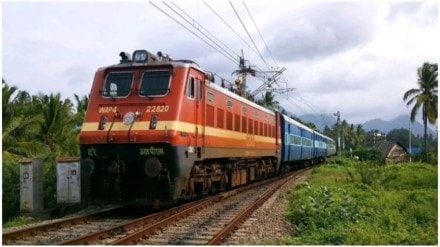The Indian Railways is reportedly planning a modest hike in passenger fares, eyeing an additional annual revenue of around Rs 1,500 crore. The first explicit fare increase since 2020 would still exclude ordinary second-class journey up to 500 km, as well as suburban and season tickets. That is hardly a step one could object to, given that the railways has virtually run a revenue deficit for years on end.
Low-income travellers will be unaffected by the judicious tariff adjustment. Railway revenues have consistently lagged the growth rate of nominal gross domestic product (GDP) by a wide margin. To be sure, the revenue from the heavily-subsidised passenger segment grew by a little over 100% between FY14 and FY25, and freight receipts, a trifle above 90%, although nominal GDP expanded by 194% during the period. Railway passenger volumes grew an abysmal 27% in the period, and freight loading an unimpressive 40%. This indicates loss of freight traffic volumes, including container cargo, to roads and ports.
In fact, a massive budgetary capital infusion — Rs 13 lakh crore in the last decade — is what has kept the railways’ operations going, and prevented its infrastructure from crumbling. The government has wisely put a freeze on fresh borrowings to prevent the railways’ debt from rising to unmanageable levels. However, the rate of annual increase in budget outlay has lately slowed. A pick-up in public-private-partnership in certain areas of non-core operations, and a likely jump in non-fare revenues, including land lease rentals (monetisation), are what the railways is pinning its hope on.
Also, aggressive plans have been drawn up to ramp up premium passenger services, where profitable tariffs are viable. Externally funded dedicated freight corridors, which can transport double-stack containers, and carry goods at a speed four times the traditional network, have become functional of late, and are expected to make operational profits straightaway. Early signs of this is visible — Maruti Suzuki, for example, is planning to increase the dispatches via the railways to 35% by FY31, up from 24% in FY25.
To the government’s credit, even amid the financial constraints, it managed to raise the stock of electrified track from 44% in 2013-14 to 95% in 2024-25. The railways has been the first mover on use of non-fossil energy for transport, while also expanding its fleet of passenger carriages and wagons at a reasonable pace. However, the target for the railways to acquire a 35% share in the logistics pie in six years appears daunting. Though the railways carries goods at roughly half the cost of roads, the absence of last-mile connectivity is a problem.
The immediate reason for the latest tariff changes is the likelihood of the passenger receipts target of Rs 92,800 crore for 2025-26 being missed by a large margin. Cross-subsidisation of passengers by freight is uncompetitive, and can’t be sustained beyond a point. As such, air-conditioned carriers account for less than a fifth of passenger volumes, but contribute nearly half of the receipts. Steep hikes in high-end and luxury train fares may not be easy either. It is unexceptionable for the government to expend an affordable sum to run, expand, and upgrade the rail infrastructure, which is a public good. The right strategy would be to create multiple profit centres and focus more on market development, while pursuing selective privatisation and optimum use of taxpayer monies. The point is where the lines are drawn and limits imposed.
